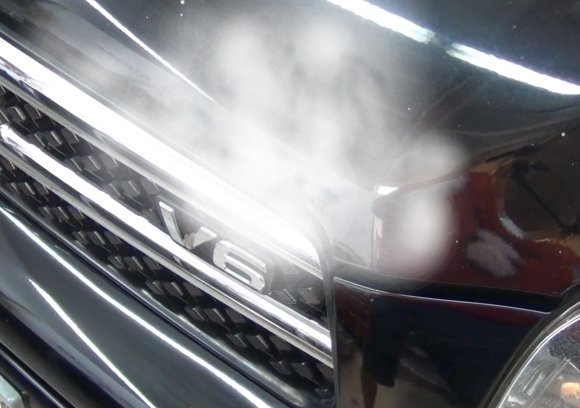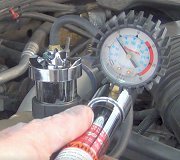To get to those bolt's holding the a/c condenser to the radiator I would use a 1/4" extension with a wobble socket and a 1/4" ratchet not a wrench. Also do you have two small hose's going to your radiator?If not then that little heat sink looking thing you found is most likely a external transmission cooler someone installed.
1. Disconnect negative cable from auxiliary jumper terminal. Remove air inlet resonator.
WARNING: DO NOT REMOVE THE CYLINDER BLOCK PLUG OR THE RADIATOR DRAINCOCK WITH THE SYSTEM HOT AND UNDER PRESSURE BECAUSE SERIOUS BURNS FROM COOLANT CAN OCCUR.
2. Drain cooling system.
3. Remove upper radiator crossmember.
CAUTION: Plastic tanks, while stronger then brass are subject to damage by impact, such as wrenches.
4. Remove hose clamps and hoses from the radiator.
5. Disconnect automatic transmission hoses from cooler and plug off.
6. Disconnect the fan wiring connector.
7. Disconnect the engine block heater wire, if equipped.
CAUTION: Avoid bending the condenser inlet tube. Care should be taken not to damage radiator or condenser cooling fins or water tubes during removal.
8. Remove the air conditioning condenser attaching screws located at the front of the radiator, if equipped. It is not necessary to discharge the air conditioning system to remove radiator.
9. Radiator can now be lifted free from engine compartment. Care should be taken not to damage radiator cooling fins or water tubes during removal.
Monday, March 14th, 2011 AT 4:32 PM



